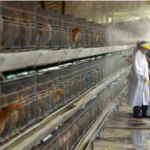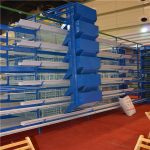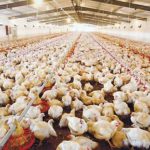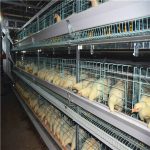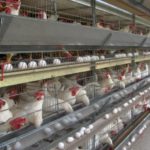Poultry farming cageis a common breeding equipment that plays an important role in providing a safe and hygienic breeding environment and ensuring the health and welfare of poultry birds. In order to ensure the quality of life of birds and the improvement of breeding efficiency, cage raising methods need to follow some design principles and bird welfare measures.
First, poultry cages should be designed with the birds’ behavior and needs in mind. Different poultry species have different behavioral characteristics and habits, so the design of the cage should be reasonably divided according to the needs of the birds. For example, nest boxes, drinking water equipment and feeders should be properly set up to meet the nesting needs, drinking water needs and feed intake needs of poultry. In addition, sufficient space should be provided so that the birds can move freely, flap and spread their wings to maintain their physical and psychological health.
Secondly, the materials and structure of thepoultry farming layer cageshould be comfortable and safe. Cage materials should be durable, easy to clean and corrosion-resistant to ensure long-term use and maintenance. In terms of structure, sharp or protruding parts should be avoided to prevent injury to birds. In addition, the temperature, humidity and ventilation conditions inside the cage also need to be reasonably set and adjusted to maintain a suitable range to meet the physiological needs of the birds.
In addition, the management of poultry farming cages needs to follow scientific and animal welfare principles. The health and welfare of birds need to be fully valued and protected. Therefore, during the breeding process, bird health inspections should be carried out regularly to detect and deal with diseases in a timely manner. At the same time, breeders carefully control breeding density to avoid overcrowding and ensure that the birds receive sufficient space and resources. In addition, breeders should receive relevant training and master scientific and reasonable feeding methods and management techniques to provide a good breeding environment and care.
Finally, the future development of poultry farming cages should also focus on environmental protection and sustainability. By using environmentally friendly materials and energy-saving equipment to reduce waste emissions and energy consumption, the pressure on the environment can be reduced and the sustainable development of the breeding industry can be achieved. At the same time, both producers and consumers should strengthen their understanding and demand for poultry breeding cages, promote the improvement of poultry welfare and breeding quality, and form positive interaction and common development.
should also focus on environmental protection and sustainability. By using environmentally friendly materials and energy-saving equipment to reduce waste emissions and energy consumption, the pressure on the environment can be reduced and the sustainable development of the breeding industry can be achieved. At the same time, both producers and consumers should strengthen their understanding and demand for poultry breeding cages, promote the improvement of poultry welfare and breeding quality, and form positive interaction and common development.
In short, the design principles ofpoultry farming cagesand bird welfare protection need to comprehensively consider the behavioral habits, comfort, safety and other factors of the birds. Through reasonable design and management, as well as attention to environmental protection, we can optimize poultry breeding cages and improve the quality of life and breeding efficiency of poultry birds. At the same time, scientific research and social education should be strengthened to improve the overall development level and social recognition of the breeding industry.


